#Hōzan-ji
Photo

Hozan-ji on Mount Ikoma, Nara Prefecture Japan.
#Buddhism#Daisho-Mudo-ji#Hokan-ji#Hōzan-ji#Ikoma-Shoten#Japan#Kankiten#Kukai#Mount Ikoma#Nara#Tankai#仏教#大聖無動寺#奈良#宝山寺#日本#湛海#生駒山#生駒山 寶山寺#生駒聖天
61 notes
·
View notes
Link
Asakusa is the center of Tokyo’s shitamachi (literally “low city”), where an atmosphere redolent with the city’s past survives. Asakusa’s main attraction is Sensō-ji, a very popular Buddhist temple, built in the 7th century. The entry to the temple is via the Nakamise, a shopping street well known for its wood-block prints, local snacks, traditional kimonos and dangling paper lanterns.
The year was 1995. I was on one of my early visits to Japan. While looking for the usual touristy knick-knacks at the crowded Nakamise souvenir shops, I got into a conversation with a young Japanese lady who spoke good English and was curious about the Ganesha tee I was wearing. As we got chatting she pointed me to a temple on a slight hillock nearby saying I could meet Lord Ganesha right there in Tokyo too! I was amazed and intrigued.
Matsuchiyama Shoden (also called the Honryūin Temple), poised on a low hilltop oversees the Sumidagawa river and was immortalised in one of Utagawa Hiroshige’s famous Ukiyo-e (woodblock paintings). This temple of the Tendai Sect of Buddhism, the tourist information board said, was most likely established in 601 AD (even perhaps in 595 AD as per other records). Yes, that is older than the main Sensō-ji temple of Asakusa (which was most probably established in 645 AD). Matsuchiyama Shoden is a Ganesha temple, dedicated to Kangiten.
The Japanese deity Kangiten inherits many names and characteristics from the Hindu god Ganesha. He is known as Bināyaka-ten very similar to our Hindu Vinayaka; the Japanese names for the God - Ganabachi and Ganwha sound very similar to Ganesha. Like Ganesha, Bināyaka is also the remover of obstacles, and when prayed to, he is supposed to bestow good fortunes on devotees, shower prosperity, bestow success and good health to all. In addition, Bināyaka-ten in Japan is said to be the destroyer of Evil; a beacon of morality. Research shows me that there is yet another moniker for Ganesha … Shō-ten or Āryadeva, the harbinger of good luck and fortune. So much for similarities.
The name Kangiten, is generally connected to Tantric embracing deity icons, venerated as the givers of joy and prosperity. The Dual Kangiten icon called Soshin Kangi-ten (“dual-bodied god of bliss”) is a unique feature of Shingon Buddhism. It is also called Soshin Binayaka in Japanese, and is really the same as Nandikeshvara in Sanskrit.
Early Buddhism was deeply intertwined with Hinduism. Consequently, many Japanese schools of Buddhism, especially those influenced by Tantric thought, brought Hindu devas or gods in their fold of worship. Some of these, over time, got adopted in the local pantheon and are associated with different bodhisattvas. So, the lines have kind of blurred over the centuries.
Interestingly, the Japanese avatar of Lord Ganesha is not into modaks. His favourite offering is radishes! All across the temple of Matsuchiyama, on the walls and on the roof, all I saw were carvings and paintings of daikon (Japanese white radish). Kangiten in Japan, I was told, is a creator of obstacles, who is however placated easily through prayer and transforms into a remover of obstacles. And what appeases him are radishes! Daikon is seen as a symbol of marital harmony, better relations and love between married couples. Blessings of Kangiten, the brochure said made for perfect matchmaking, and helped fertility post marriage. Symbolism very similar to our Lord Ganesha.
The Vigraha below is located in Kyoto and was installed by Emperor Gikogon in 1372 CE.
Kangiten / Vinayakaten are the names of Ganesha in Japan and he has been worshipped in the country for past about 1000 years.
Daikon offerings were emblazoned on lanterns, stone plates and wood carvings at the temple. They were everywhere. Matsuchiyama Shoden apparently holds a daikon festival on 7 January every year when people come to pray for the well-being of their families and success in business. When a daikon is offered by a devotee, the pershad given by the shrine is cooked Japanese radish (furofuki daikon) and sacred rice sake (omiki). The sake is pretty usual at Japanese shrines but the cooked radish was surely different. At the temple, besides the overwhelming daikon imagery, there were plenty of images of money pouches too. I think the pouches signified success in business. Not different from Hindu symbolism.
“Bliss-buns” (kangi-dan), a deep fried confection filled with red-bean paste is supposed to be a delicacy of the Shoden temple. However, I could not sample these during my visit.
A poster on display at Matsuchiyama Shoden talked about an oil-bathing (yokuyu kitō) ritual to honor the deity Kangiten, referred to him in the communication as the God of Bliss. The ceremonial bathing ritual was apparently meant to fulfill all the prayers of devotees, I was told during my temple visit. How the ritual bathing is exactly done however was not very clear, as there was no information available about it. It must be, I suppose, like the mustard oil poured at Hanuman temples on Tuesdays back home. One session, the poster said, cost JPY 3500. I had to give the oil-bath a miss, whatever it was supposed to be.
The Matsuchiyama Shoden temple is rather small. There is a small pond on the premises. The hill, a local informed me, is accessible by The Sakura Rail, a cross between an elevator and a monorail. I came back blessed from the temple visit though the actual Ganesha statue remains ‘vaulted’ because it is ensconced in an inner sanctum not visible from the public areas.
While Kangiten is worshipped throughout Japan, Hōzan-ji on the summit of Mount Ikoma is his most important and active temple. Though the temple is believed to have been founded in the sixth century, it came in the limelight in the 17th century when the monk Tankai (1629–1716) made the temple's Gohonzon, a Heian period, gilt-bronze image of the Dual Kangiten, the centre of attraction and devotion.
There is also a large Kangiten in Kyoto, installed by Emperor Gikogon in 1372 CE, which is the closest likeness to the Indian Ganesha.
So, during this period of Ganesha celebrations in India, it is gratifying to know that the Lord’s dominions extend to far-away Japan where the Vighnaharta has a following too.
Dr. Sandeep Goyal is a self-confessed Nipponophile. He has visited Japan over 100 times. He is the author of two books on Japan, Konjo – The Fighting Spirit and Japan Made Easy, both published by Harper Collins.
2 notes
·
View notes
Photo
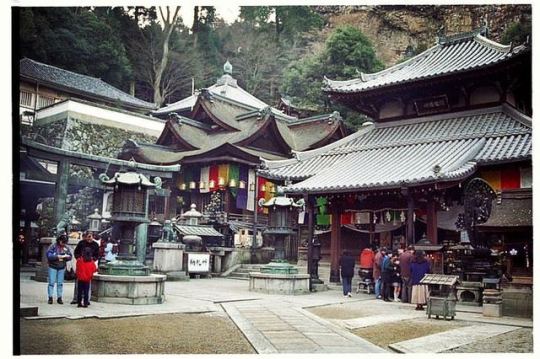
#Ancient Hōzan-ji #Temple of Lord #Ganesha At Mount Ikoma , Japan . In Japan Ganesha Is Known As Kangiten #japan #kangiten #japan_daytime_view
0 notes
Photo
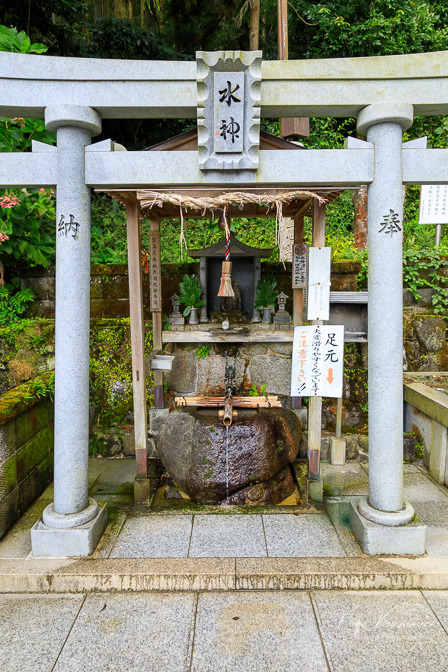
Hozan-ji on Mount Ikoma, Nara Prefecture Japan.
#Buddhism#Daisho-Mudo-ji#Hokan-ji#Hōzan-ji#Ikoma-Shoten#Japan#Kankiten#Kukai#Mount Ikoma#Nara#Tankai#仏教#大聖無動寺#奈良#宝山寺#日本#湛海#生駒山#生駒山 寶山寺#生駒聖天
23 notes
·
View notes
Photo
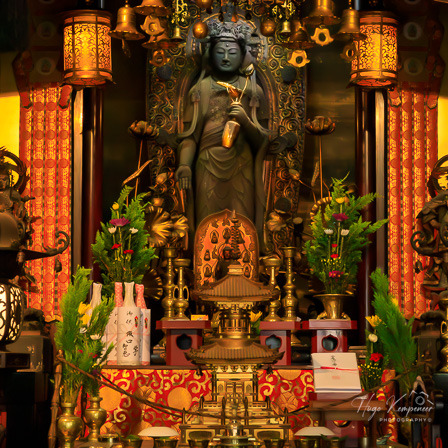
Hozan-ji on Mount Ikoma, Nara Prefecture Japan.
#Buddhism#Daisho-Mudo-ji#Hokan-ji#Hōzan-ji#Ikoma-Shoten#Japan#Kankiten#Kukai#Mount Ikoma#Nara#Tankai#仏教#大聖無動寺#奈良#宝山寺#日本#湛海#生駒山#生駒山 寶山寺#生駒聖天
26 notes
·
View notes
Photo

Hozan-ji on Mount Ikoma, Nara Prefecture Japan.
#Buddhism#Daisho-Mudo-ji#Hokan-ji#Hōzan-ji#Ikoma-Shoten#Japan#Kankiten#Kukai#Mount Ikoma#Nara#Tankai#仏教#大聖無動寺#奈良#宝山寺#日本#湛海#生駒山#生駒山 寶山寺#生駒聖天
22 notes
·
View notes
Photo
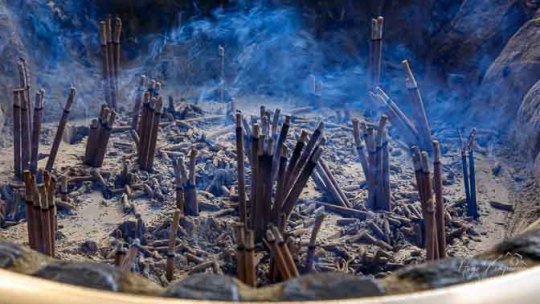
The Pleasant And Calming Aroma Of Incense.
Incense in Buddhism is considered a symbol of the transient nature of life. The fragrant smoke rising from the burning incense represents the ephemeral nature of all things, reminding practitioners of the impermanence of life and the cycle of birth and death, which is a central concept in Buddhism.
Purification and Cleansing: Incense is used for purifying the environment and the practitioner's mind before engaging in religious activities. The act of offering incense is seen as a way to cleanse negative energy and create a serene, pure atmosphere for meditation and prayer.
#Buddhism#Daisho-Mudo-ji#Hokan-ji#Hōzan-ji#Ikoma-Shoten#Japan#Kankiten#Kukai#Mount Ikoma#Nara#Tankai#仏教#大聖無動寺#奈良#宝山寺#日本#湛海#生駒山#生駒山 寶山寺#生駒聖天
19 notes
·
View notes
Photo

The area around Hozan-ji was originally a place for training Buddhist monks. The name of the place at that time was Daisho-Mudo-ji.
Mount Ikoma was originally an object of worship for the ancient people in the region, so this area was selected for religious training. The training area is said to have opened in 655 by En no Gyōja. Many Buddhist monks, including Kukai (空海), are said to have trained here.
#Buddhism#Daisho-Mudo-ji#Hokan-ji#Hōzan-ji#Ikoma-Shoten#Japan#Kankiten#Kukai#Mount Ikoma#Nara#Tankai#仏教#大聖無動寺#奈良#宝山寺#日本#湛海#生駒山#生駒山 寶山寺#生駒聖天
18 notes
·
View notes
Photo

The area around Hozan-ji was originally a place for training Buddhist monks. The name of the place at that time was Daisho-Mudo-ji.
Mount Ikoma was originally an object of worship for the ancient people in the region, so this area was selected for religious training. The training area is said to have opened in 655 by En no Gyōja. Many Buddhist monks, including Kukai (空海), are said to have trained here.
#Buddhism#Daisho-Mudo-ji#Hokan-ji#Hōzan-ji#Ikoma-Shoten#Japan#Kankiten#Kukai#Mount Ikoma#Nara#Tankai#仏教#大聖無動寺#奈良#宝山寺#日本#湛海#生駒山#生駒山 寶山寺#生駒聖天
18 notes
·
View notes
Photo

The area around Hozan-ji was originally a place for training Buddhist monks. The name of the place at that time was Daisho-Mudo-ji.
Mount Ikoma was originally an object of worship for the ancient people in the region, so this area was selected for religious training. The training area is said to have opened in 655 by En no Gyōja. Many Buddhist monks, including Kukai (空海), are said to have trained here.
#Buddhism#Daisho-Mudo-ji#Hokan-ji#Hōzan-ji#Ikoma-Shoten#Japan#Kankiten#Kukai#Mount Ikoma#Nara#Tankai#仏教#大聖無動寺#奈良#宝山寺#日本#湛海#生駒山#生駒山 寶山寺#生駒聖天
10 notes
·
View notes
Photo
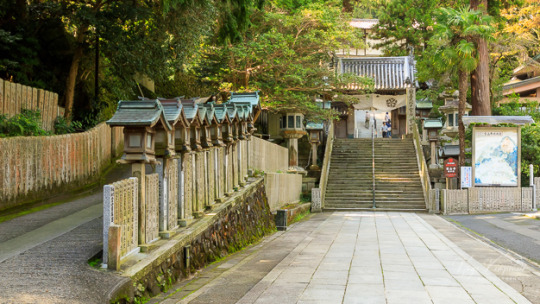
The area around Hozan-ji was originally a place for training Buddhist monks. The name of the place at that time was Daisho-Mudo-ji.
Mount Ikoma was originally an object of worship for the ancient people in the region, so this area was selected for religious training. The training area is said to have opened in 655 by En no Gyōja. Many Buddhist monks, including Kukai (空海), are said to have trained here.
#Buddhism#Daisho-Mudo-ji#Hokan-ji#Hōzan-ji#Ikoma-Shoten#Japan#Kankiten#Kukai#Mount Ikoma#Nara#Tankai#仏教#大聖無動寺#奈良#宝山寺#日本#湛海#生駒山#生駒山 寶山寺#生駒聖天
8 notes
·
View notes
Photo

Hozan-ji on Mount Ikoma, Nara Prefecture Japan.
#Buddhism#Daisho-Mudo-ji#Hokan-ji#Hōzan-ji#Ikoma-Shoten#Japan#Kankiten#Kukai#Mount Ikoma#Nara#Tankai#仏教#大聖無動寺#奈良#宝山寺#日本#湛海#生駒山#生駒山 寶山寺#生駒聖天
9 notes
·
View notes
Photo

The area around Hozan-ji was originally a place for training Buddhist monks. The name of the place at that time was Daisho-Mudo-ji.
Mount Ikoma was originally an object of worship for the ancient people in the region, so this area was selected for religious training. The training area is said to have opened in 655 by En no Gyōja. Many Buddhist monks, including Kukai (空海), are said to have trained here.
#Buddhism#Daisho-Mudo-ji#Hokan-ji#Hōzan-ji#Ikoma-Shoten#Japan#Kankiten#Kukai#Mount Ikoma#Nara#Tankai#仏教#大聖無動寺#奈良#宝山寺#日本#湛海#生駒山#生駒山 寶山寺#生駒聖天
7 notes
·
View notes
Photo

Hozan-ji on Mount Ikoma, Nara Prefecture Japan.
#Buddhism#Daisho-Mudo-ji#Hokan-ji#Hōzan-ji#Ikoma-Shoten#Japan#Kankiten#Kukai#Mount Ikoma#Nara#Tankai#仏教#大聖無動寺#奈良#宝山寺#日本#湛海#生駒山#生駒山 寶山寺#生駒聖天
6 notes
·
View notes
Photo

The area around Hozan-ji was originally a place for training Buddhist monks. The name of the place at that time was Daisho-Mudo-ji.
Mount Ikoma was originally an object of worship for the ancient people in the region, so this area was selected for religious training. The training area is said to have opened in 655 by En no Gyōja. Many Buddhist monks, including Kukai (空海), are said to have trained here.
#Buddhism#Daisho-Mudo-ji#Hokan-ji#Hōzan-ji#Ikoma-Shoten#Japan#Kankiten#Kukai#Mount Ikoma#Nara#Tankai#仏教#大聖無動寺#奈良#宝山寺#日本#湛海#生駒山#生駒山 寶山寺#生駒聖天
6 notes
·
View notes
